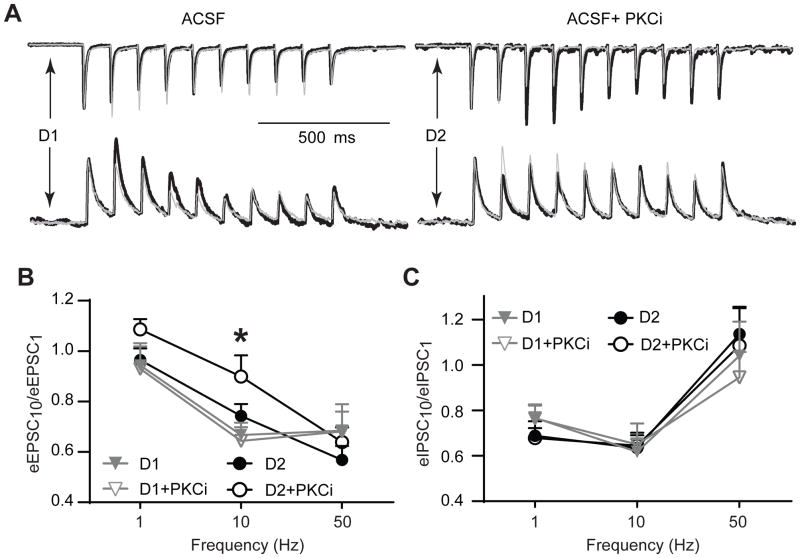Figure 5. Trains of stimuli differentially modulate synaptic excitation in NAc shell D1DR- and D2DR-positive MSNs following PKC blockade.
(A) Top, representative eEPSCs elicited by a 1 second train of stimuli at 10 Hz in D1DR- and D2DR-positive MSNs. Thick, black traces recorded in the presence of PKC inhibition are overlaid onto thin gray traces recorded in the absence of PKC inhibition. PKC inhibition induces a consistent increase in eEPSC amplitude throughout the stimulus train seen in D2DR-, but not D1DR-positive MSNs. Stimulus artifacts were removed for illustration. Responses in each overlaid set of traces are normalized to the peak amplitude of the first pulse in the absence of PKC inhibition for ease of comparison. Bottom, no consistent response to PKC inhibition could be observed for eIPSCs in D1DR- and D2DR-positive MSNs. (B) An activity-dependent effect on eEPSC trains is expressed as a ratio of the last (eEPSC10) to first (eEPSC1) current response at 3 frequencies of stimulation. The difference between D2DR+PKCi and D1DR+PKCi groups is significant (*, p<0.05, Tukey’s post-hoc; n=9–12 cells from 4–5 animals). (C) Same as (B), but for eIPSCs. No significant differences were found (n=8–12 cells from 3–5 animals).

